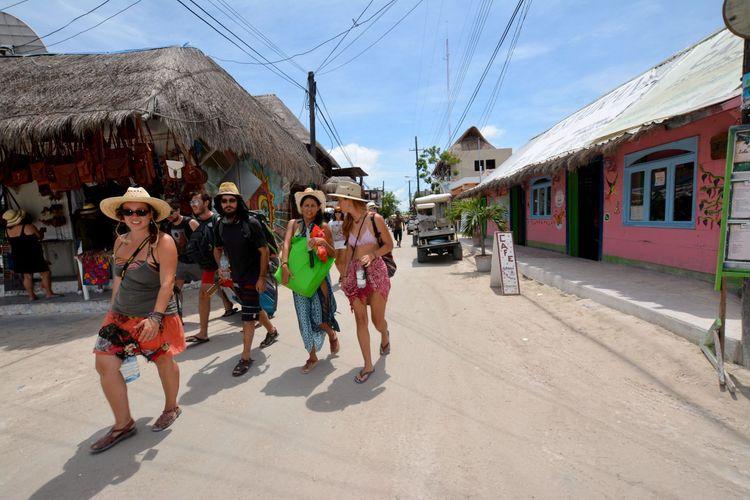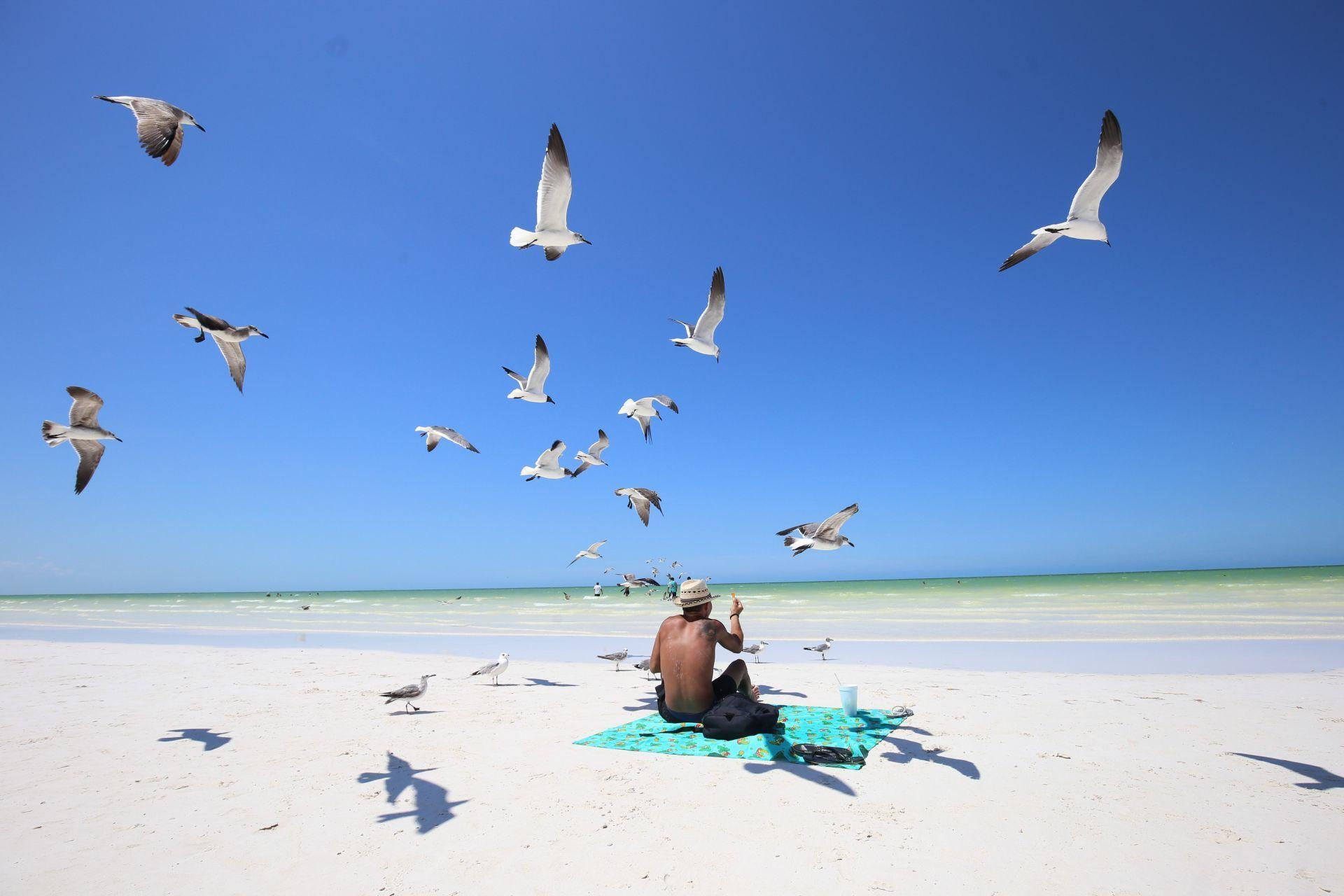The recent Agreement for the protection of the Federal Maritime Terrestrial Zone of Isla Chica in Holbox, Quintana Roo, is hampered by a lack of budget for the institutions responsible for Protected Natural Areas (ANP), shared Aarón Siller, a senior expert at the Mexican Center for Environmental Law (CEMDA).
Just last February 3rd, the Secretariat of Environment and Natural Resources (Semarnat) announced in the Official Gazette of the Federation (DOF) that, as part of this Agreement, more than 785 thousand square meters of maritime beach, federal maritime land and land gained from the sea will be allocated to the National Commission for Protected Natural Areas (Conanp).
The purpose is for Conanp to take responsibility for the conservation and sustainable management of Isla Chica. This would be the second Agreement issued by Semarnat for Holbox. In June of last year, it was also published in the DOF that 33,128 square meters of the Big Island would be integrated into Conanp.
“But many of these paper agreements are inefficient if the resources are not put in place to operate. [...] In the last decade, the federal budget for Protected Natural Areas has been reduced. This complicates conservation because there are not enough resources such as vehicles for inspection and surveillance, and sometimes you don't even have gas to carry out activities,” said Siller.

Tourists strolling on Holbox streets, Quintana Roo. Photo: Elizabeth Ruiz/Cuartoscuro.
Holbox Island is located within Yum Balam, an area in the municipality of Lázaro Cárdenas, less than 200 kilometers from Cancun, declared as a Flora and Fauna Protection Area since 1994. It also has the international distinction of Ramsar for its strip of mangroves, in addition to being home to species in conservation such as jaguars, American and swamp crocodiles, sea turtles and manatees.
However, for the last decade, the threat of extractive tourism has occupied Holbox, causing environmental consequences. For example, the extension of Kuká Avenue that caused mangroves to be felled in February of last year, as part of the work of mega-tourism projects in Isla Grande, according to complaints from organizations such as Grupo Gema del Mayab, Centinelas del Agua A.C. and CEMDA.
“In the last ten years, Holbox has experienced exponential growth in tourism, which is why the place has changed. After being a fishing village, it is now seen as a tourist area... The change in the use of the island and the presence of hotels has led to environmental problems. In the case of Isla Chica, they are reflected in lack of sanitation, problems with garbage and water, floods...”, described Aarón Siller from CEMDA.
A cashless management plan
For 2022, the Federal Expenditure Budget (PEF) in the environmental sector will increase by 30% compared to last year. However, 95.2% of this increase will go to the National Water Commission (Conagua). While other agencies such as Conanp, the Federal Office of the Environment (Profepa) and the National Forestry Commission (Conafor) are lagging behind.
In the case of Conanp, only 887 million pesos were allocated, in contrast to the more than 33 billion that Conagua will handle.
This would leave Protected Natural Areas with an average of 9.7 pesos per hectare for their care, according to estimates from the study “Caring for What Matters: Budgeting for Natural Heritage”, promoted by Fundar, the Niparajá Natural History Society and Pronatura Noroeste.
According to Semarnat, the new Agreement for the protection of the Federal Maritime Terrestrial Zone of Isla Chica in Holbox will make it possible to “carry out actions for the protection, conservation and sustainable management of its resources in accordance with the provisions of the management program of the Yum Balam Flora and Fauna Protection Area where this island is located”.
“There is already a management program, there are also complementary policies, but we start from the need for the resources to implement them. In addition, environmental crimes continue to be perpetrated, both within the federal zone and outside it, and we return to the same thing, the Profepa, which should follow up on them, has no resources,” insisted the senior CEMDA expert.
In accordance with the 2022 PEF, for this year Profepa will only receive 776 million pesos, an increase of 34 million compared to last year.
A Monster in the Mangrove
Despite the recent Agreements and the management program for the Yum Balam ANP, Semarnat continues to receive and evaluate Environmental Impact Statements (MIA) for the establishment of real estate projects such as the creation of apartments and hotels.
In 2018 alone, Profepa closed works and activities of the “Grip Holbox Apartments” project of more than one hundred square meters, due to the clearing and use of fire for the removal of vegetation, mainly mangroves. This could be considered the most recent documented case in which the authorities intervened.
“There is a lot of pressure to build on Isla Grande, to develop tourism, but we don't have the optimal conditions to do so. There is a fragile environmental situation,” Siller explained.
In addition, the Yum Balam management program, published in October 2018, lists the list of prohibited activities, such as “altering or destroying by any means or action the feeding, nesting, shelter or reproduction sites of wildlife species” and “construction of public or private works, with the exception of walkers, trails and beach clubs and infrastructure to support conservation activities”.
The destruction of areas such as mangroves represents an ecological imbalance since they are ecosystems that protect against storms, floods and cyclones, as well as filtering pollutants preventing them from reaching seas and functioning as carbon sinks, according to information from the Inter-American Association for the Defense of the Environment (AIDA).
“These tourism projects already exist, but we should ask ourselves the question of whether we need another Cancun in Holbox at the expense of natural resources,” Siller concluded.



Comentarios (0)